Motor Oil Basics: Oil Viscosity - Select Synthetics - AMSOIL Authorized Dealer



Main menu:
- Home Page
-
Products
-
AMSOIL Products
- Shop by Product
- Shop by Equipment
- Shop by Category
-
Product Lookup Guides
- Product Lookup Guides - Home
- Filter Lookup Guides
- Auto & Light Truck Lookup Guide
- Motorcycle & Dirt Bike Lookup Guide
- Harley-Davidson Products Guide
- All-Terrain Vehicle Lookup Guide
- Utility Terrain Vehicle Lookup Guide
- Snowmobile Lookup Guide
- Marine Outboard Lookup Guide
- Personal Watercraft Lookup Guide
- Small Engine Lookup Guide
- Free Product Catalog
- AMSOIL - The Blog
- AMSOIL YouTube Videos
- AMSOIL Performance Tests
- The AMSOIL Newsstand
- AMSOIL Testimonials
- AMSOIL Guarantee
- Safety Data Sheets
- Oil Analysis Services
- Shipping & Product Return
- Safe & Secure Shopping
-
AMSOIL Products
- About AMSOIL
-
Oil Basics
- What Is Motor Oil?
- What Is Oil Viscosity?
- What Does Motor Oil Do?
- Why Does Oil Need To Be Changed?
- How Often Should I Change My Oil?
- When Should I Do My 1st Oil Change?
- Can I Mix Different Oils?
- Lubrication Regimes
- Newtonian vs. Non-Newtonian
- Base Oil Groups
- Motor Oil Specifications
- Service Classifications & Grades
- Oil Evaluation Tests
- Oil Filtration
- What is Oil Analysis?
- Why Synthetics?
- Buy Wholesale
- FAQs
- Contact Us
Oil Basics > What Is Oil Viscosity?


What Is Oil Viscosity? – Part 1
Oil Viscosity: the Basics
Dynamic & Kinematic Viscosity/Viscosity Index/Grease Consistency
Since the development of the engine, viscosity (thickness) of motor oil has always been recognized as its most important property in avoiding catastrophic failure.
The Viscosity of a fluid is a physical measurement of its internal resistance to flow. Otherwise stated, it is a measure of the fluid’s internal adhesive/cohesive frictional properties.
An oil that has a high viscosity is described as being “thicker” or “heavier” while an oil that has a low viscosity is described as “thinner” or “lighter” – the thicker the oil, the higher its viscosity. It's a lot easier to say, "Honey is thicker than water" than to say, "Honey has a higher viscosity than water."
The reciprocal (or inverse) of viscosity is fluidity.
The viscosity of oil is affected by temperature changes during use. At hotter temperatures, it becomes thinner (viscosity decreases) and provides less engine protection. At colder temperatures, it thickens (viscosity increases) and becomes more difficult to pump around the engine, resulting in less protection at start-up and an increase in wear.
The viscosity must be high enough to maintain a lubricating film between moving parts, but low enough that the lubricant can easily flow through the oil filter into galleries (passageways) and around the various engine parts under all conditions.
Another factor that affects viscosity is contamination of the engine oil; when oil becomes contaminated, its viscosity changes. With soot, dirt, and sludge, viscosity increases; with fuel dilution it decreases. Both directions of viscosity change are potentially harmful to the engine.
Dynamic Viscosity
Dynamic Viscosity is a measurement of a fluid’s internal friction or its resistance to gradual deformation by shear stress or tensile stress. It is usually reported in units called centipoise (cP), which is numerically equal to millipascal-second (mPa·s). Dynamic viscosity is sometimes referred to as absolute viscosity.
Imagine that a lubricating fluid is compressed between two large flat plates creating a film between the plates; one plate is fixed, the other one is moving horizontally at a constant speed. As the top plate moves, each layer of fluid will move faster than the one just below it, and friction between them will give rise to a force resisting their relative motion. In particular, the fluid will apply on the top plate a force in the direction opposite to its motion, and an equal but opposite one to the bottom plate. An external force is therefore required in order to keep the top plate moving at a constant speed and overcome the fluid’s film friction. The greater the friction, the greater the amount of force required.
Dynamic viscosity is a measure of the fluid’s resistance to being deformed by this shearing force.

The Dynamic (shear) Viscosity of a fluid varies with changes in temperature; therefore its measurement is meaningless unless the temperature at which it is determined is given. A common tool used to measure dynamic viscosity is a Rotary Viscometer, such as the ‘Brookfield Viscometer’, which employs a rotating spindle that experiences torque as it rotates against fluid friction.
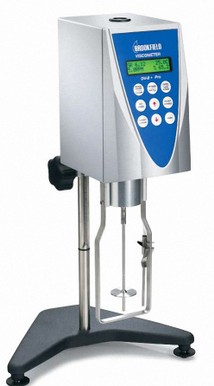
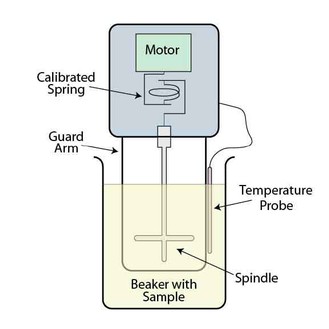
Kinematic Viscosity
A more familiar viscosity measurement is Kinematic Viscosity. Kinematic viscosity takes into account the fluid’s density (specific gravity) as a quotient of its dynamic viscosity. Otherwise stated, Kinematic Viscosity (cSt) is the fluid’s dynamic viscosity (cP) divided by its specific gravity (SG) (see below). It is usually reported in centistokes (cSt) or mm2/s.

Kinematic Viscosity is the amount of time, in centistokes (mm2/s), that it takes for a specified volume of fluid to flow, under the force of gravity, through a fixed diameter orifice at a given temperature. Since kinematic viscosity varies inversely with temperature, its value is meaningless unless the temperature at which it is determined is given. Kinematic viscosity is determined by using a Capillary Tube Viscometer.
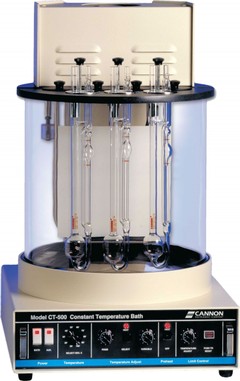
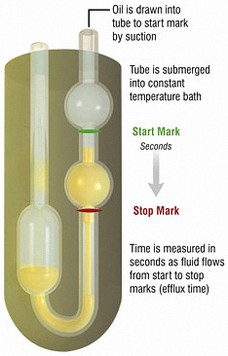
Viscosity Index
When U.S. engineers came to realize that at sub-zero temperatures oil refined from the aromatic black crude oil from the Texas Gulf was much thicker than oil refined from light amber Pennsylvania crude, they began to measure this difference in behavior with a viscosity ratio metric called the Viscosity Index.
The Viscosity Index (VI) was developed by E. Dean and G. Davis in 1929. Pennsylvania crude (paraffinic) was set as a benchmark at one extreme, representing low viscosity changeability relative to temperature. At the other extreme was Texas Gulf crude (naphthenic).
If a lubricant was similar to the Pennsylvania crude, it was assigned a VI of 100. If it was similar to Texas Gulf crude, it was assigned a VI of 0. Halfway in between was a VI of 50, and so forth. The higher the VI, the more stable the viscosity across a range of temperatures (more desirable).
The Viscosity Index (VI) is an arbitrary measure of the variation in the viscosity of oil due to changes in temperature. Put differently, the Viscosity Index is a measure of how much the oil's viscosity changes with changes in temperature. The higher the viscosity index, the less the oil’s viscosity changes with changes in temperature. The viscosity index is simply reported as a numerical value that has no units. The measurements are taken at 40°C and 100°C.
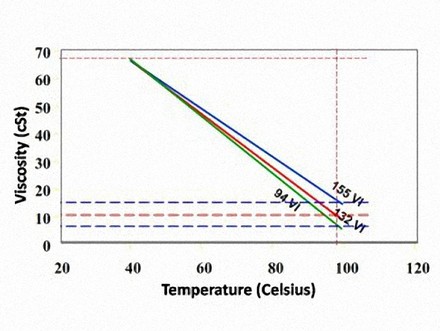
Given that oils with higher viscosity indices thin less at higher temperatures and don’t thicken as much at lower temperatures, the higher the viscosity index, the better the motor oils will perform in temperature extremes. Therefore, oils with higher viscosity indices are desirable and preferable.
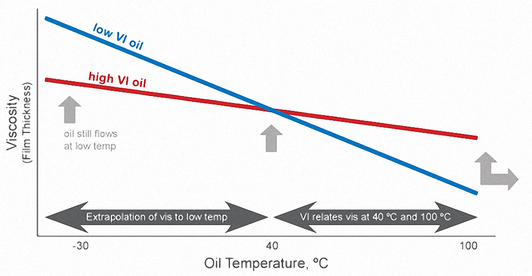
AMSOIL Synthetic oils (such as our Signature Series line) have very high native viscosity indices.
Grease Consistency
So far, the products discussed have been fluids, but what about greases? In some lubricant applications, it is impossible to contain a fluid lubricant. For these applications, greases are used.
There are benefits of using grease as opposed to using oil in certain applications.
Grease seals out contaminants, is better suited for insoluble solid additives like molybdenum disulfide and graphite, and has better stop-start performance because it doesn’t drain away like oil does. It’s hard to imagine a machine operating without grease in it as the majority of dynamic machine operations run on bearings, which need grease for lubrication.
A simple description of Grease is a semi-solid lubricant composed of base oil, additives and a thickener. In other words, greases are motor oils enhanced with a thickening agent to make them semi-solid.
The thickener in grease, often described as “the sponge that holds the lubricant”, is added in most cases to help keep the lubricant in place on applications where a fluid lubricant would run off. The thickener makes up anywhere from 10 to 30 percent of the total content.
The thickener is either a simple or a complex soap. Simple soap is made up of long fibers and has a smooth, buttery texture. Examples of simple soaps are lithium, polyurea, calcium, and silica. Complex soap is made up of both short and long fibers and has a more fibrous texture. Some examples are aluminum, sodium, and barium.
By far the most popular greases worldwide are lithium-based greases with a market share of more than 75 percent. Lithium grease, for example, can be used both in chassis and wheel bearing applications. Because of their compatibility with most widely used lithium greases, lithium-complex and calcium-sulfonate greases are the best candidates of high-performance multi-purpose greases.
Lithium-complex greases generally possess good stability, high-temperature characteristics and water-resistance properties. Other performance requirements like extreme pressure, anti-wear, rust and corrosion can further be improved by adding suitable additives. Nevertheless, a careful comparison between lithium-complex and calcium-sulfonate greases reveals that calcium-sulfonate greases hold an advantage.
Calcium-sulfonate greases out-perform lithium-complex greases both on the data sheet as well as in actual applications. The most important difference between these two types of grease is that calcium-sulfonate greases do not typically need additives to meet certain performance requirements like lithium-complex greases do.
Calcium-sulfonate greases exhibit superior mechanical and shear stability compared to lithium-complex greases, indicating less leakage and run-out during operation, they can be used at higher temperatures, have inherent extreme-pressure and anti-wear properties, are known to be natural rust inhibitors, and provides excellent water-resistance properties.
Because greases are not a fluid, their resistance to flow is generally called consistency instead of viscosity. (Note: the viscosity may be reported for the base oil used to make the grease, but not of the finished product.)
Greases are sold by consistency grade.
Grease consistency is measured using the Cone Penetration Test. In this test, consistency is determined by the penetration of a cone of specified dimensions, mass and finish into a standard amount of grease at 25°C. The penetration is measurement in tenths of a millimeter of how far gravity sinks the cone into the surface of the grease within 5 seconds.
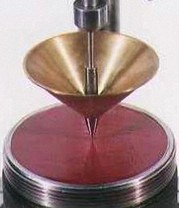
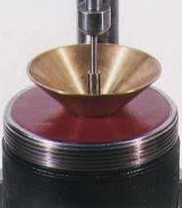
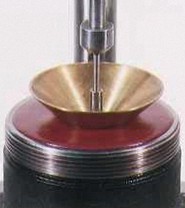
Next: “Part 2: Oil Viscosity Grades”
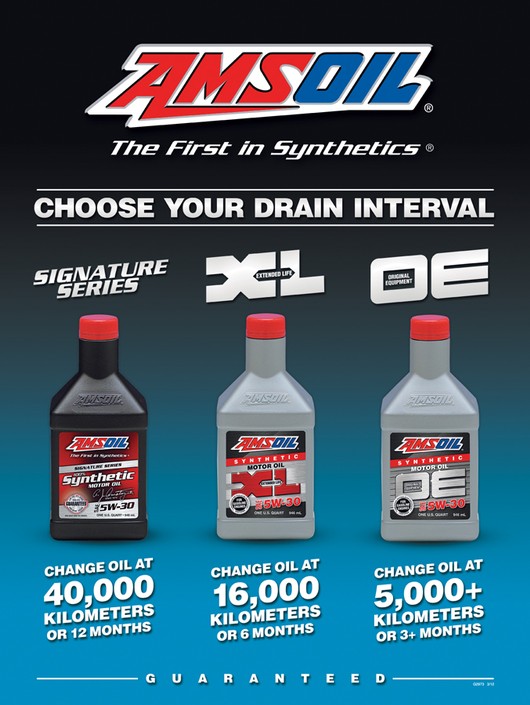

Home Page | Products | About AMSOIL | Oil Basics | Buy Wholesale | FAQs | Contact Us | General Site Map